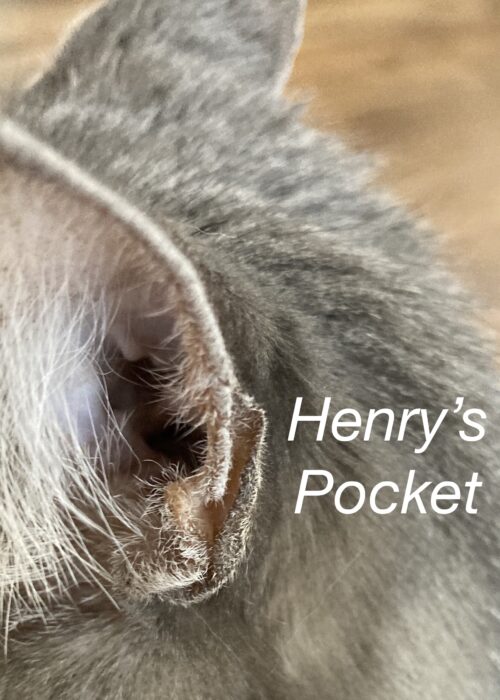
Your cat lives in a noisy world. What do cats hear? Cats have some of the best hearing of all the land mammals. They can detect sounds in a range of 50Hz to around 80kHz (Hz measures the frequency or pitch of sounds). In contrast, we humans detect sounds of 20Hz to 20 kHz – the cat clearly can hear much higher pitched sounds than we can (Reference 1).
Usually, larger animals are better able to hear low frequency sound due to larger sound-receiving structures like outer ears and inner ear components. However, unlike other mammals whose middle ear has a single chamber, the cat’s middle ear has two. This increases the range of frequencies over which the eardrum can vibrate, giving the cat one of the widest frequency ranges of hearing. The cat’s hearing is most sensitive between 500 Hz and 32 kHz (Reference 1).
Cats can hear the lower pitched human male voice at 90-155 Hz as well as women’s higher pitched voices at 165 -255 Hz.
your cat lives in a noisy world – what do cats hear

Sound enters your cat’s outer ears or “pinnae”. Most cat have cone-shaped ears that funnel sound into the middle and inner ears, amplifying the sound. Each “pinna” has 32 individual muscles that move and orient it. The pinnae move independently of each other and can rotate 180 degrees (Reference 1).
Distance between the ears allows the cat to pinpoint the location of his prey. Sounds reach one ear before the other, allowing the cat to compare time and intensity of the signal. The cat turns his head to orient toward the prey and his ears then move up and down to further fix on the location (Reference 2).
The nooks and crannies (corrugations) in your cat’s pinnae also are used to obtain information. Incoming sounds reflect off these structures in the ear, intensifying the sound frequencies. The cat is able to gauge the elevation of the sound source and whether it’s coming from in front or behind (Reference 1).
Being able to hear in the ultrasonic range (greater than 20 kHz) helps cats hunt small rodents. Rats, for example, communicate using ultrasonic vocalizations at frequencies exceeding 19–20 kHz (Reference 3). The pinna go into action, helping the cat find his dinner.
Your cat lives in a noisy world – health concerns
Like humans, cats can suffer damage to their ears and hearing loss from illness, toxic drugs and exposure to loud noises. (Reference 4).
Here are some loudness levels of typical appliances in the home. These levels refer to frequencies that people can hear (20 Hz to 20 kHz). An upper limit of 70-80 dB is considered safe for humans. In industrialized society, cats often show a significant amount of changes in the ears thought to be due to street noise, around 70 dB (Reference 4).
Loudness is measured in decibels. Decibels compares a sound with a reference sound, the threshold of human hearing. It is a logarithmic scale: 10-decibel sound is 10 times the intensity of the reference sound; a 20-decibel sound is 100 times the reference intensity, and so on. (https://www.merriam-webster.com/dictionary/decibel)
from: https://www.captel.com/2019/10/noise-levels-household-sounds-infographic/
| Appliance | Loudness (dB) |
|---|---|
| TV | 70 |
| Vacuum Cleaner | 60-85 |
| Dishwasher | 55-70 |
| Food Processor | 80-90 |
| Washing Machine | 50-75 |
These noise levels refer to frequencies that people can hear (20 Hz to 20 kHz). What about the intensity of sounds above 20 kHz?
Your cat lives in a noisy world – ultrasonic noise
There is an increasing interest in the loudness of sounds that we humans cannot hear. Current regulations only address human-audible sound. But many human engineered devices produce sound in the ultrasonic range, including cells phones, smart TV’s, and security cameras. Some studies have started to measure ultrasonic noise in our environment. High levels have not been found at this time but as more and more devices come online, it is important to monitor levels of ultrasonic sounds, particularly in our homes (Reference 5).
Our cats hear at these ultrasonic frequencies and their health may be at risk. “Inaudible sounds” (those we can’t hear) have been found to affect endocrine and cardiovascular function, sleep-wake cycles, seizure susceptibility and behavior in laboratory animals (Reference 6). In particular, ultrasonic noise has been linked to Feline Audiogenic Reflex Seizures (Reference 7). Cats develop this syndrome around 15 years of age, it is more likely to occur in cats that are deaf or partially deaf. Protecting our cats’ hearing may put them less at risk of developing this syndrome.
Protecting our Cats from Noise
Be aware that loud, sustained noise of any frequency can damage the structures in cats’ ears. Although there are hoods that cover cats’ ears on the market, it is wiser to set aside a quiet room for your cat in the event there will be sustained loud noises; this room should be free of electronic devices. If you see the cat preferring to spend time in this “noise refuge”, you may want to take some extra steps to reduce electronic noise in your house (Reference 8).
- Switch off devices at the plug when practical (and save on phantom power draw).
- Locate home media equipment in a closet or garage to isolate ultrasound as well as whine and fan noises you can hear.
Your cat lives in a noisy world. Some of this noise we may not even hear, although our cats do. Be sure to monitor your cat’s behavior. Take steps to protect your cat from potentially damaging levels of sounds.
references
- Heffner RS, Heffner HE. Hearing range of the domestic cat. Hear Res. 1985;19(1):85-8. doi: 10.1016/0378-5955(85)90100-5. PMID: 4066516.
- Populin LC, Yin TC. Pinna movements of the cat during sound localization. J Neurosci. 1998 Jun 1;18(11):4233-43. doi: 10.1523/JNEUROSCI.18-11-04233.1998. PMID: 9592101; PMCID: PMC6792787
- Boulanger-Bertolus J, Mouly AM. Ultrasonic Vocalizations Emission across Development in Rats: Coordination with Respiration and Impact on Brain Neural Dynamics. Brain Sci. 2021 May 11;11(5):616. doi: 10.3390/brainsci11050616. PMID: 34064825; PMCID: PMC8150956.
- D.K. Ryugo, PhD1 and M. Menotti-Raymond, PhD. Deafness in Cats. Vet Clin North Am Small Anim Pract. 2012 November ; 42(6): 1179–1207. doi:10.1016/j.cvsm.2012.08.008
- Grimshaw-Aagaard, M., Bemman, B. Ultrasonics and urban greening: an exploratory study on ultrasound presence in urban spaces. Pers Ubiquit Comput 28, 677–692 (2024). https://doi.org/10.1007/s00779-024-017]
- Turner JG, Parrish JL, Hughes LF, Toth LA, Caspary DM. Hearing in laboratory animals: strain differences and nonauditory effects of noise. Comp Med. 2005 Feb;55(1):12-23. PMID: 15766204; PMCID: PMC3725606
- Feline Audiogenic Reflex Seizures. https://icatcare.org/articles/feline-audiogenic-reflex-seizures-fars, published 6/8/24, updated 7/18/24
- Cooley, Brian. Your home electronics could be driving your pet nuts. https://www.cnet.com/home/smart-home/is-technology-driving-your-pet-insane/ 11/23/21
Want to keep up with the world of cats? Subscribe to The Feline Purrspective!



